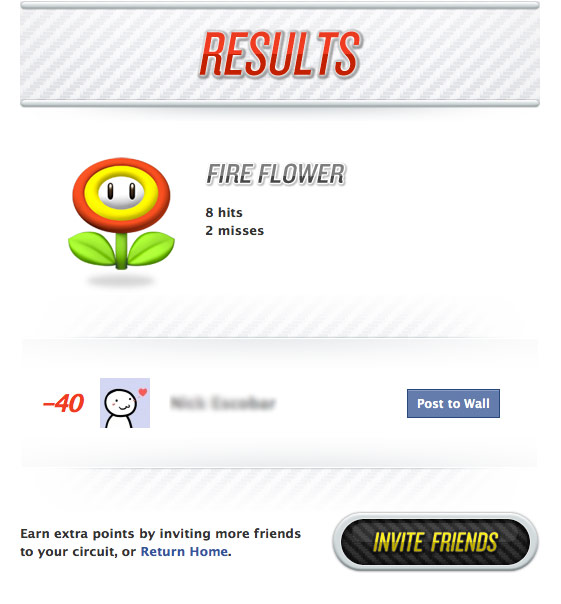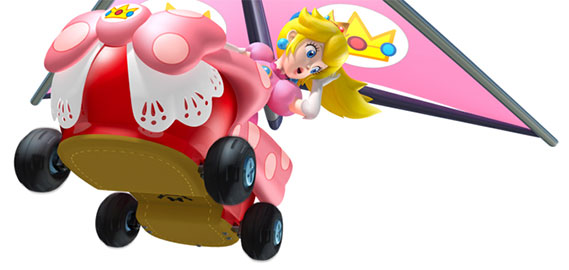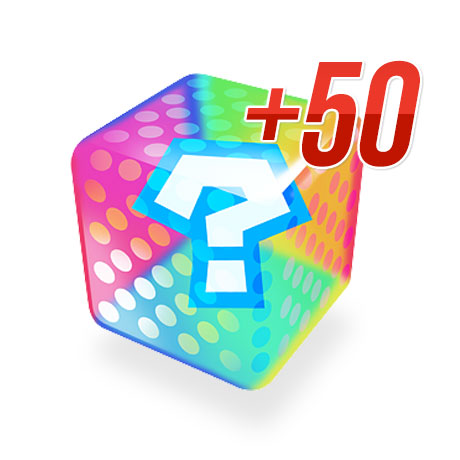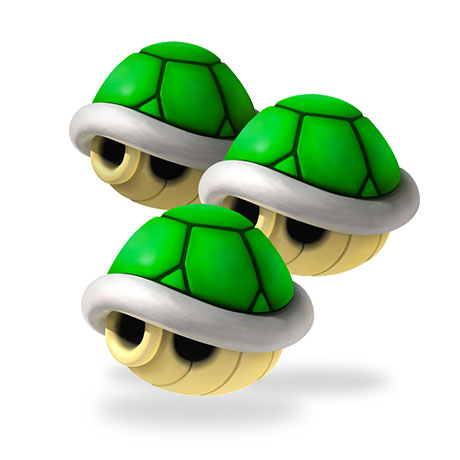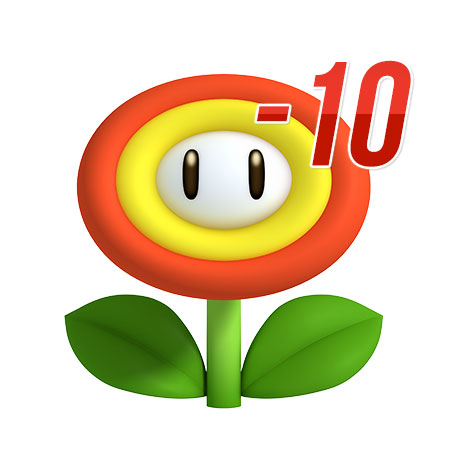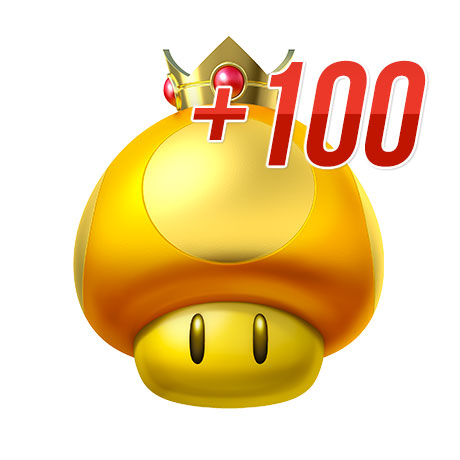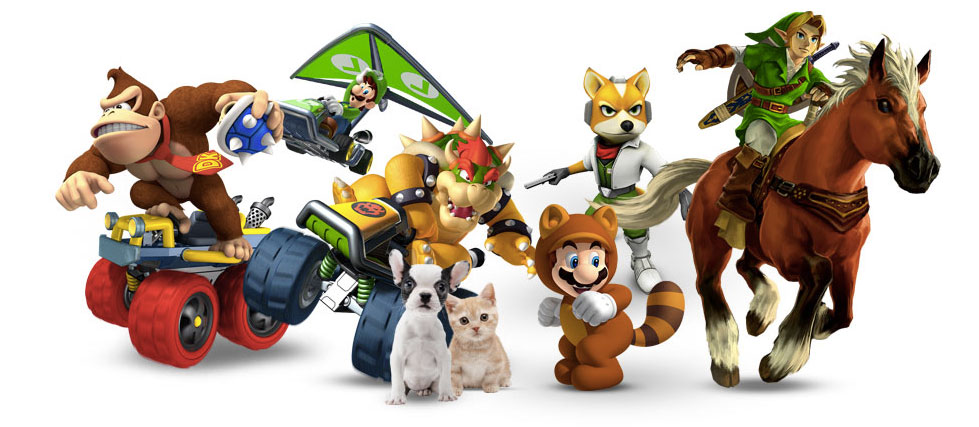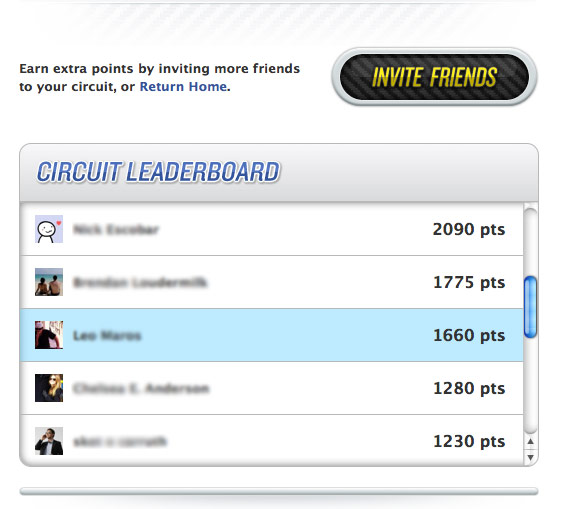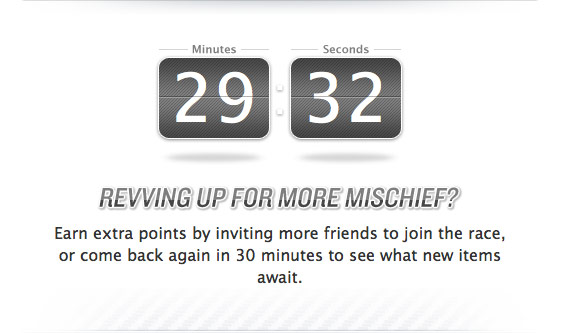The famous Mario Kart item boxes were central to our game. Every time a user visited the app they were encouraged to click on one of four item boxes. Clicking on an item box triggered an animation that would reveal an item from the game. The game rewarded users based on their leaderboard standing. Items included boosters, like Mushrooms or the Star, that you could use to power yourself up the leaderboard and weapons, like the green or red Turtle Shells, Lightning or Bullet. Upon receiving a weapon, users were asked to target a Facebook friend.

We also built in mechanics to increase sharing, rewarding bonus points if people invited friends to the game and encouraging people to post to their friend’s wall with the item they used against them:
